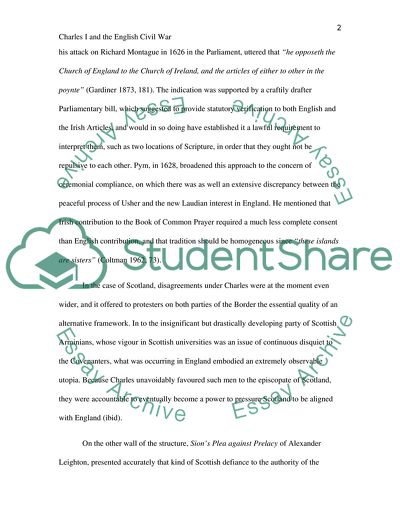Cite this document
(Charles I and the English Civil War Thesis Example | Topics and Well Written Essays - 5000 words, n.d.)
Charles I and the English Civil War Thesis Example | Topics and Well Written Essays - 5000 words. https://studentshare.org/history/1719551-charles-intolerance-of-religion-in-the-3-kingdoms-as-the-main-reason-for-the-english-civil-war
Charles I and the English Civil War Thesis Example | Topics and Well Written Essays - 5000 words. https://studentshare.org/history/1719551-charles-intolerance-of-religion-in-the-3-kingdoms-as-the-main-reason-for-the-english-civil-war
(Charles I and the English Civil War Thesis Example | Topics and Well Written Essays - 5000 Words)
Charles I and the English Civil War Thesis Example | Topics and Well Written Essays - 5000 Words. https://studentshare.org/history/1719551-charles-intolerance-of-religion-in-the-3-kingdoms-as-the-main-reason-for-the-english-civil-war.
Charles I and the English Civil War Thesis Example | Topics and Well Written Essays - 5000 Words. https://studentshare.org/history/1719551-charles-intolerance-of-religion-in-the-3-kingdoms-as-the-main-reason-for-the-english-civil-war.
“Charles I and the English Civil War Thesis Example | Topics and Well Written Essays - 5000 Words”. https://studentshare.org/history/1719551-charles-intolerance-of-religion-in-the-3-kingdoms-as-the-main-reason-for-the-english-civil-war.


